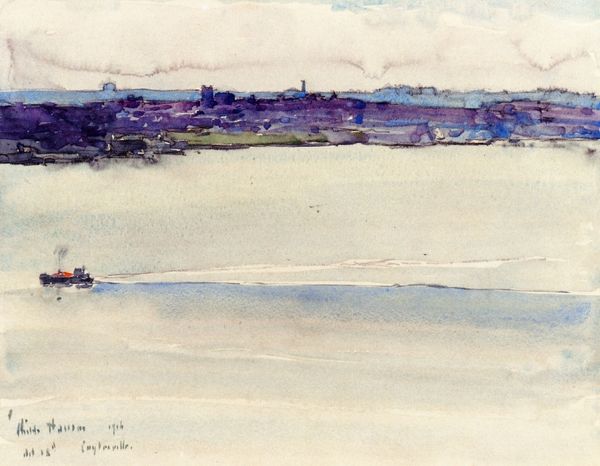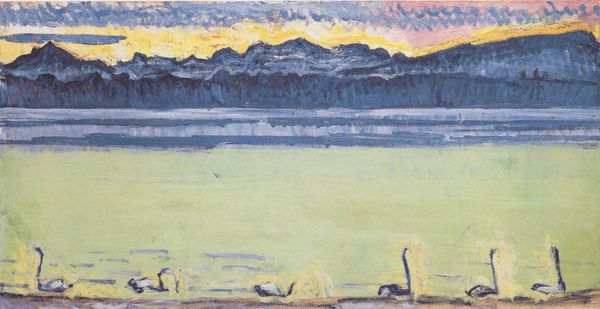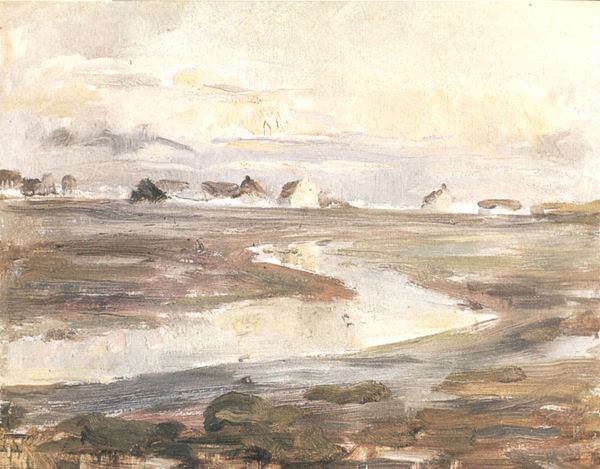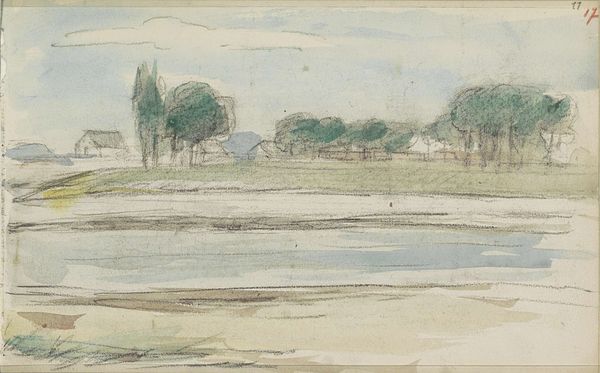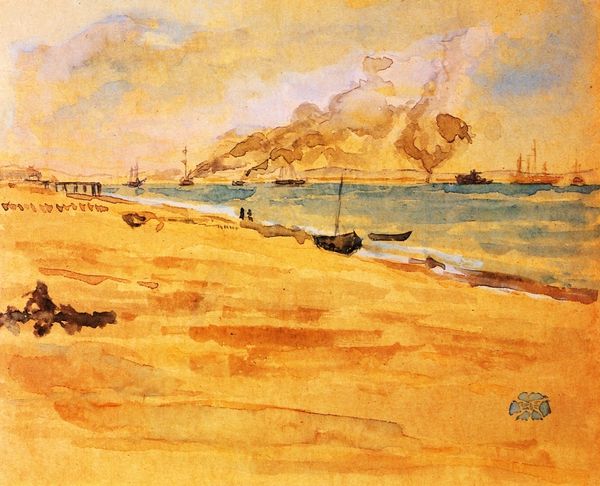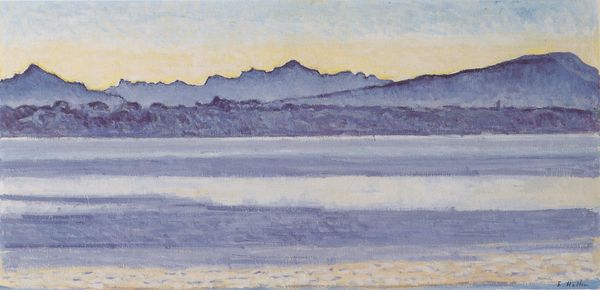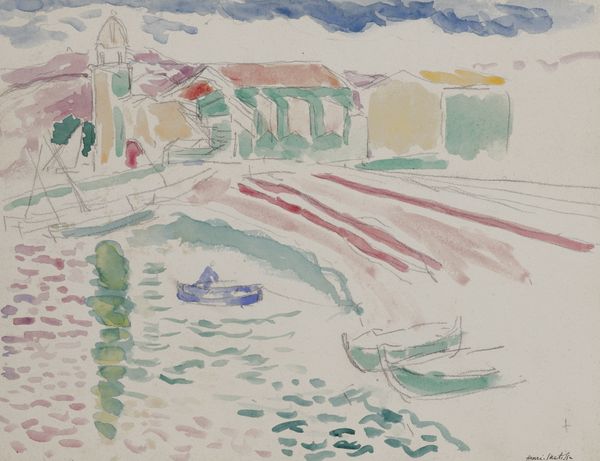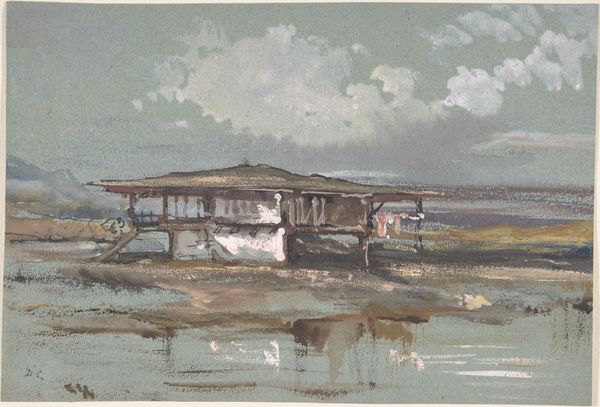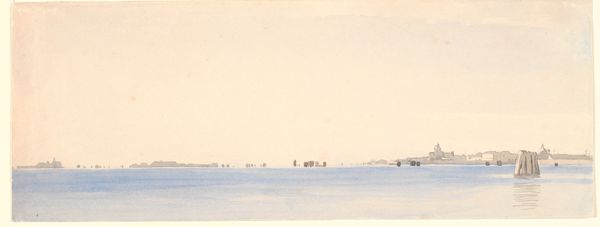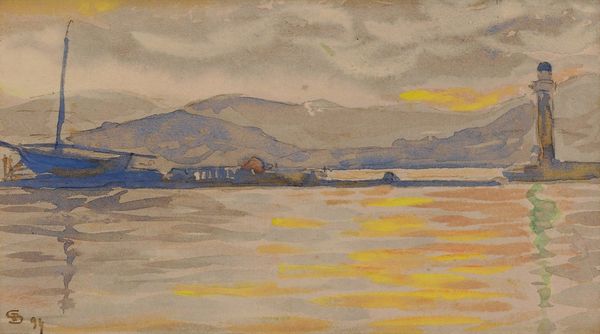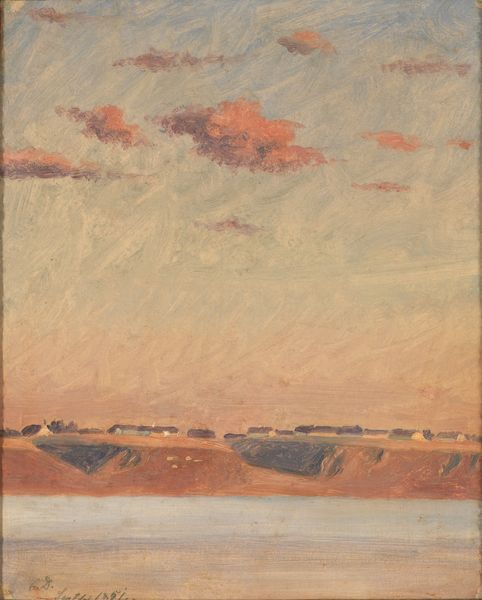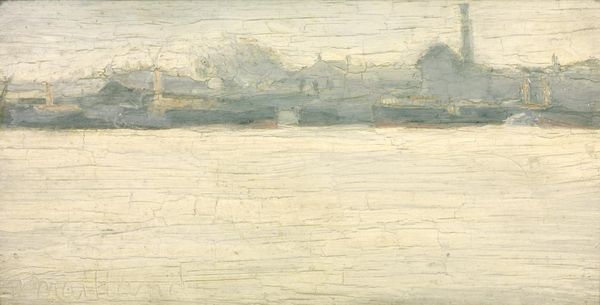
Dimensions: 59 x 89.5 cm
Copyright: Public domain
Editor: Here we have Ferdinand Hodler’s “Lake Geneva with six swans,” painted in 1914. It’s done in watercolor, and there’s almost a serene, hazy quality to the scene. What do you see when you look at this piece? Curator: The immediate thing that strikes me is the artist's engagement with material reality. Notice how Hodler treats the watercolor— the fluidity of the paint becomes synonymous with the lake itself. The method of application mirrors its subject! Editor: Interesting, I hadn’t thought of it that way. Curator: Consider the political climate of 1914 as well. While many artists were exploring abstraction, Hodler focused on landscape using available material, the humble watercolor. Doesn't this, in its own way, challenge the perceived "grand narratives" being pushed elsewhere? Where others saw war, Hodler focused on locality, reflecting available resources during scarcity. The means of production, readily available to many during war, versus material excesses favored elsewhere... how does this position influence our view? Editor: So you’re saying the accessibility of watercolor as a medium itself plays a role in interpreting the work, especially considering the time it was made? Curator: Exactly! The swans, too. Hodler is famous for landscapes, not really for including the animals. What do swans represent in popular understanding and culture at the time? Perhaps it even suggests a resistance against industrial modes in favor of simpler imagery and local life, but with what end, especially given Hodler’s broader symbolism and engagement with nationalism? The work operates on these multiple levels that all impact our comprehension and emotional connection to it. Editor: Wow, I’m definitely looking at it differently now, realizing how the art making process can be as significant as the subject. Thank you! Curator: My pleasure! The beauty, I think, lies in understanding that tension and revealing all its complex relations.
Comments
No comments
Be the first to comment and join the conversation on the ultimate creative platform.
